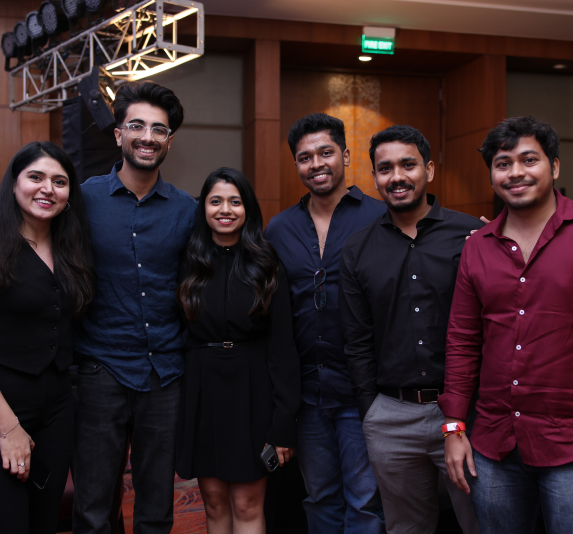Imagine bootstrapping a D2C brand from a place where the startup ecosystem is underdeveloped and resources are limited.
But there is a fast-fashion D2C brand from Guwahati that is navigating all these challenges and making it to national headlines. Of course, we are talking about LittleBox.
But before we dive into how and why LittleBox has become the talk of the town within just 2 years of inception, meet Rimjim, the face of LittleBox!
Rimjim Deka, your typical girl-next-door, was born and raised in a small town in Arunachal Pradesh. Her dad’s central government job could only provide for a middle-class lifestyle, but she had big aspirations.
After graduating, Rimjim moved to Delhi to work at a PR agency, but her day job left her feeling unfulfilled. Fashion had always been her passion, so she started a side hustle—blogging about the latest trends. Little did she know, blogging would spark her entrepreneurial journey. A mentor nudged her to take it further by selling fashion products online.
She took the plunge, ordered 50 items from Alibaba, snapped some photos, and listed them on her self-built website. To her surprise, they sold out in no time. That success led her to quit her job and spend the next few years honing her entrepreneurial skills.
In 2017, Rimjim married Partha Kakati, who later became her co-founder at LittleBox. While she was navigating the fast-fashion world, Partha was set on moving to the US for a Data Science career. But when the pandemic hit, their plans shifted and, in 2022, they launched LittleBox!
How LittleBox Unboxed 75 Cr ARR Within 2 Years Of Launch!
Rimjim and Partha bootstrapped LittleBox by investing INR 30 Lakhs with a simple aim – bring latest fashion trends to GenZ and millennials at affordable prices.
Call it luck or sheer business sense, LittleBox clocked INR 9 Cr in its first year of sales. They draw inspiration from luxury fashion brands and replicate the same making minute changes to avoid copyright claims – something exactly what Nancy Tyagi is doing these days.
Neatly positioned as an affordable fast-fashion brand, LittleBox listed products on its website ranging between INR 999 and INR 1599. Yes, they had cracked a desirable price point for the masses but what actually worked for them was quality.
What’s more striking than the revenue of LittleBox is the strategic decisions Rimjim and Partha have taken.
Strategic Centres Of Operation
Logistics was the biggest constraint, but the workforce was relatively cheaper in Guwahati.
So, they set up two bases in two different cities-
📍 Guwahati – to handle backend operations (content, support, marketing, IT)
📍 Delhi NCR – to handle manufacturing, logistics, warehousing
Doing so, LittleBox was able to keep fixed costs low.
In-House Manufacturing
In Sep’ 23 they had just 1 factory and were fulfilling orders through third-party manufacturing. But as soon as they generated revenue, they eventually moved manufacturing in-house. Today, all manufacturing is done through company-owned factories.
Feature On Shark Tank India
LittleBox always aspired to be a brand that was made in Guwahati but for India. But marketing costs to fulfil this aspiration could have been extremely high. So, they leveraged Shark Tank India.
Not only did they bag an all-shark deal by shelling 2.5% equity for INR 75 Lakhs, but also got what they wanted – media attention and wide coverage. This feature on Shark Tank India boosted their net revenue by 1.75 times within a week.
LittleBox has offline stores in Delhi, Guwahati, and Shillong, but 98% of sales comes from their D2C website. All thanks to the media coverage they got.
ReInvesting Profits
Today, LittleBox is making around INR 6 Cr every month with 8% EBITDA. But the founders are reinvesting their profits into the company to accommodate headcount and expand product lines.
What was once a 6-member team is today 100 strong and growing aggressively across functions.
But How Is LittleBox Thriving In The Highly-Commoditised Fast-Fashion Industry?
Rimjim says she is not fearful of competition. The fast-fashion industry in India is huge and there is more than enough room for multiple players to take market share. But what actually works for LittleBox is the fact that they are almost always the first company to bring any new fashion trend to market – affordable and extremely trending products that can’t be found in competitor websites.
They launch new design batches every 15 days. And this design-to-market speed is what helps them engage customers.
But, This Is Too Good To Be True… Aren’t There Any Challenges?
No startup is built without challenges and struggles.
Logistics cost accounts for 13% of net revenue, which for the founders of LittleBox is high. They are still figuring out ways to bring this down to 10%. If they fail to do so, they won’t be able to keep costs affordable, meaning they will lose one of their major competitive edges.
Second issue is hiring. As per the founders, it’s formidable to attract good talent and convince them about the long-term vision of the company. Fast-fashion isn’t as attractive for job seekers as Data Analytics or Product Management.
What’s Next?
The long-term goals of Rimjim & Partha are pretty straight-forward.
✔️ Clock INR 400 Cr ARR in the next 5 years.
✔️ Building an inclusive and highly-engaging community of consumers.
✔️ Break stereotypes and set the notion that it’s possible for people from any walk of life to build a profitable business.
✔️ Create employment opportunities for people from the North East.
Will There Be A BigBox?







.svg)
.svg)





